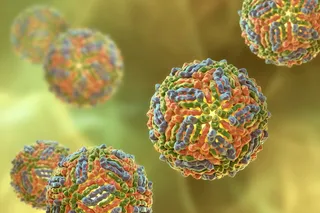The only thing scarier than the simultaneous surge of two viruses is the simultaneous surge of three. That's what scientists are saying this season, anyway, since three separate viral threats, including influenza, COVID-19 and RSV, are all showing signs of spiking this winter.
So, what would this supposed "tripledemic" actually mean, and why might so many viruses surge all at once?
Since respiratory viruses are more active in the winter, scientists have worried about the possibility of a "twindemic," or a combined surge of influenza and coronavirus, almost from the start of the pandemic. And specialists warn that a surprisingly severe spike in cases of flu or COVID-19 could bend the already strained medical system in the U.S. beyond its breaking point. This, experts say, would undermine the medical system's ability to care for a wide variety of patients, whether they're suffering from respiratory viruses or any other medical condition ...















